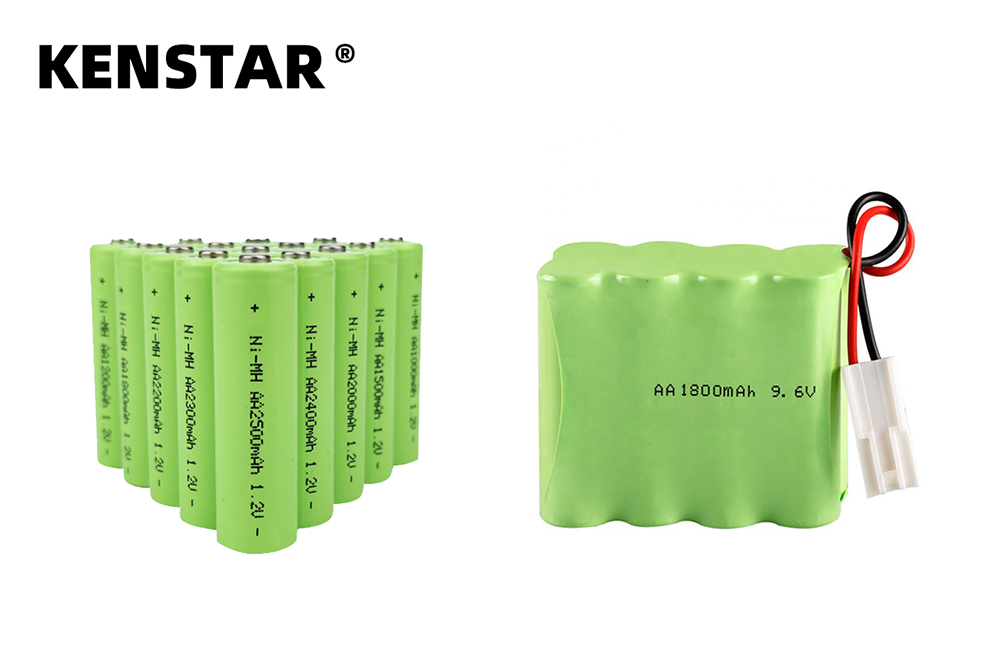There are six key characteristics of NiMH batteries. Charging characteristics and discharging characteristics that mainly show working characteristics, self-discharging characteristics and long-term storage characteristics that mainly show storage characteristics, and cycle life characteristics and safety characteristics that mainly show integrated. They are all determined by the structure of the rechargeable battery, mainly in the environment in which it is located, with the obvious characteristic of being immeasurably affected by temperature and current. The following with us to take a look at the characteristics of the NiMH battery.
1. Charging characteristics of NiMH batteries.
When the NiMH battery charging current increases and (or) the charging temperature decreases will cause the battery charging voltage to rise. Generally in the ambient temperature between 0 ℃ ~ 40 ℃ using a constant current charge of not more than 1C, while charging between 10 ℃ ~ 30 ℃ can obtain a higher charging efficiency.
If the battery is often charged in a high or low temperature environment, it will cause a reduction in the performance of the power battery. For fast charging above 0.3C, charging control measures are indispensable. Repeated overcharging will also reduce the performance of the rechargeable battery, therefore, high and low temperatures and high current charging protection measures must be in place.
2. Discharge characteristics of NiMH batteries.
The discharge platform of NiMH battery is 1.2V. The higher the current and the lower the temperature, the lower the discharge voltage and discharge efficiency of the rechargeable battery will be, and the maximum continuous discharge current of the rechargeable battery is 3C.
The discharge cut-off voltage of rechargeable batteries is generally set at 0.9V, and the IEC standard charge/discharge mode is set at 1.0V, because, below 1.0V, a stable current can generally be provided, and below 0.9V a slightly smaller current can be provided, therefore, the discharge cut-off voltage of NiMH batteries can be regarded as a voltage range from 0.9V to 1.0V, and some rechargeable batteries can be subscripted to 0.8V. In general, if the cut-off voltage is set too high, the battery capacity cannot be fully utilized, and conversely, it is very easy to cause the rechargeable battery to over-discharge.
3. Self-discharge characteristics of NiMH batteries.
It refers to the phenomenon of capacity loss when the rechargeable battery is fully charged and stored open circuit. The self-discharge characteristics are critically affected by the ambient temperature, and the higher the temperature, the greater the capacity loss of the rechargeable battery after storage.
4. Long-term storage characteristics of NiMH batteries.
The key is the ability to recover the power of NiMH batteries. Through a long period of time (such as a year) when used after storage, the capacity of the rechargeable battery may be smaller than the capacity before storage, but through several charging and discharging cycles, the rechargeable battery can be restored to the capacity before storage.
5. NiMH battery cycle life characteristics.
The cycle life of NiMH battery is affected by the charge/discharge system, temperature and use method. According to IEC standard charge and discharge, one complete charge and discharge is the charge cycle of NiMH battery, and several charge cycles make up the cycle life, and the charge and discharge cycle of NiMH battery can exceed 500 times.
6. Safety performance of NiMH battery.
The safety performance of NiMH batteries is better in the design of rechargeable batteries, which is certainly related to the material used in its material, but also has a close relationship with its structure.
Post time: Sep-22-2022





